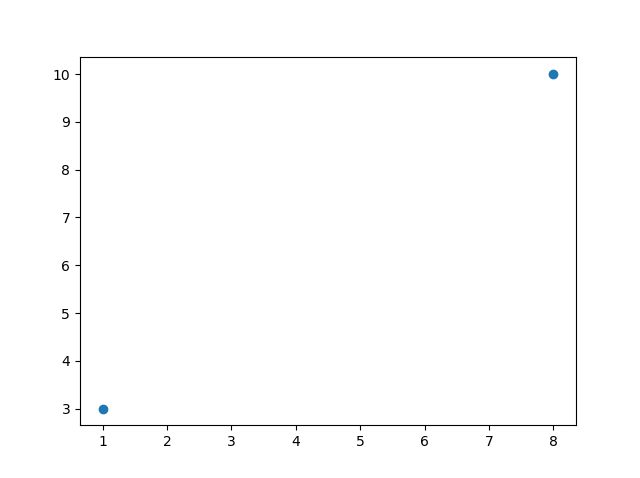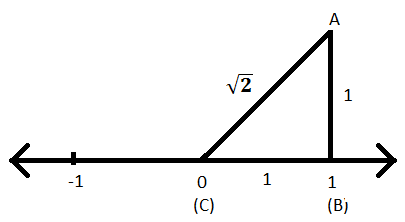Plot 8/10 On Number Line
The video explains how to plot integers on the number line.http://mathispower4u.com. Plot Integer On Number Line - Displaying top 8 worksheets found for this concept. Some of the worksheets for this concept are Purpose to practice adding and subtracting integers with, Name graphing integers on a number line, Plotting opposite integers on a number line work 6, Number line, Lesson 1 positive and negative numbers on the number line, Grade 6 grade 7 grade 8, Opposite integers 1.
Learning Outcomes
Reading and Marking Integers on Number Lines Moderate. Ramp up our practice of reading and marking integers on a number line! Observe the number lines with points paced at 2-unit, 4-unit, and 5-unit intervals, and answer the questions in parts A and B. Voiceover Graph 0.6 on the number line. Down here we have a number line that goes from zero to one and it's split into one, two, three, four, five, six, seven, eight, nine, 10 equal spaces. These tick marks, there's 10 of these spaces all the way from zero to one. Here is a number line with the number of pennies and world population plotted: Lesson 10 Practice Problems. Find three different ways to write the number 437,000 using powers of 10. For each pair of numbers below, circle the number that is greater. Estimate how many times greater.
Plot 8/10 On Number Line Worksheets
- Locate and label improper and proper fractions on a number line
- Order fractions and mixed numbers on a number line
- Use inequality symbols to compare fractions and mixed numbers
Now we are ready to plot fractions on a number line. This will help us visualize fractions and understand their values.
Doing the Manipulative Mathematics activity “Number Line Part [latex]3[/latex] ” will help you develop a better understanding of the location of fractions on the number line.
Let us locate [latex]frac{1}{5},frac{4}{5},3,3frac{1}{3},frac{7}{4},frac{9}{2},5[/latex], and [latex]frac{8}{3}[/latex] on the number line.
We will start with the whole numbers [latex]3[/latex] and [latex]5[/latex] because they are the easiest to plot.

Plot On Number Line Solver
The proper fractions listed are [latex]frac{1}{5}[/latex] and [latex]frac{4}{5}[/latex]. We know proper fractions have values less than one, so [latex]frac{1}{5}[/latex] and [latex]frac{4}{5}[/latex] are located between the whole numbers [latex]0[/latex] and [latex]1[/latex]. The denominators are both [latex]5[/latex], so we need to divide the segment of the number line between [latex]0[/latex] and [latex]1[/latex] into five equal parts. We can do this by drawing four equally spaced marks on the number line, which we can then label as [latex]frac{1}{5},frac{2}{5},frac{3}{5}[/latex], and [latex]frac{4}{5}[/latex].
Now plot points at [latex]frac{1}{5}[/latex] and [latex]frac{4}{5}[/latex].
The only mixed number to plot is [latex]3frac{1}{3}[/latex]. Between what two whole numbers is [latex]3frac{1}{3}?[/latex] Remember that a mixed number is a whole number plus a proper fraction, so [latex]3frac{1}{3}>3[/latex]. Since it is greater than [latex]3[/latex], but not a whole unit greater, [latex]3frac{1}{3}[/latex] is between [latex]3[/latex] and [latex]4[/latex]. We need to divide the portion of the number line between [latex]3[/latex] and [latex]4[/latex] into three equal pieces (thirds) and plot [latex]3frac{1}{3}[/latex] at the first mark.

Finally, look at the improper fractions [latex]frac{7}{4},frac{9}{2}[/latex], and [latex]frac{8}{3}[/latex]. Locating these points will be easier if you change each of them to a mixed number.
[latex]frac{7}{4}=1frac{3}{4},frac{9}{2}=4frac{1}{2},frac{8}{3}=2frac{2}{3}[/latex]
Here is the number line with all the points plotted.
Example
Locate and label the following on a number line: [latex]frac{3}{4},frac{4}{3},frac{5}{3},4frac{1}{5}[/latex], and [latex]frac{7}{2}[/latex].
Solution:
Start by locating the proper fraction [latex]frac{3}{4}[/latex]. It is between [latex]0[/latex] and [latex]1[/latex]. To do this, divide the distance between [latex]0[/latex] and [latex]1[/latex] into four equal parts. Then plot [latex]frac{3}{4}[/latex].
Next, locate the mixed number [latex]4frac{1}{5}[/latex]. It is between [latex]4[/latex] and [latex]5[/latex] on the number line. Divide the number line between [latex]4[/latex] and [latex]5[/latex] into five equal parts, and then plot [latex]4frac{1}{5}[/latex] one-fifth of the way between [latex]4[/latex] and [latex]5[/latex] .
Now locate the improper fractions [latex]frac{4}{3}[/latex] and [latex]frac{5}{3}[/latex] .
It is easier to plot them if we convert them to mixed numbers first.
[latex]frac{4}{3}=1frac{1}{3},frac{5}{3}=1frac{2}{3}[/latex]
Divide the distance between [latex]1[/latex] and [latex]2[/latex] into thirds.
Next let us plot [latex]frac{7}{2}[/latex]. We write it as a mixed number, [latex]frac{7}{2}=3frac{1}{2}[/latex] . Plot it between [latex]3[/latex] and [latex]4[/latex].
Plot 8/10 On Number Line
The number line shows all the numbers located on the number line.

try it
#146007
#146008

Watch the following video to see more examples of how to locate fractions on a number line.
In Introduction to Integers, we defined the opposite of a number. It is the number that is the same distance from zero on the number line but on the opposite side of zero. We saw, for example, that the opposite of [latex]7[/latex] is [latex]-7[/latex] and the opposite of [latex]-7[/latex] is [latex]7[/latex].

Fractions have opposites, too. The opposite of [latex]frac{3}{4}[/latex] is [latex]-frac{3}{4}[/latex]. It is the same distance from [latex]0[/latex] on the number line, but on the opposite side of [latex]0[/latex].
Thinking of negative fractions as the opposite of positive fractions will help us locate them on the number line. To locate [latex]-frac{15}{8}[/latex] on the number line, first think of where [latex]frac{15}{8}[/latex] is located. It is an improper fraction, so we first convert it to the mixed number [latex]1frac{7}{8}[/latex] and see that it will be between [latex]1[/latex] and [latex]2[/latex] on the number line. So its opposite, [latex]-frac{15}{8}[/latex], will be between [latex]-1[/latex] and [latex]-2[/latex] on the number line.
Example
Locate and label the following on the number line: [latex]frac{1}{4},-frac{1}{4},1frac{1}{3},-1frac{1}{3},frac{5}{2}[/latex], and [latex]-frac{5}{2}[/latex].
Show SolutionSolution:
Draw a number line. Mark [latex]0[/latex] in the middle and then mark several units to the left and right.
To locate [latex]frac{1}{4}[/latex], divide the interval between [latex]0[/latex] and [latex]1[/latex] into four equal parts. Each part represents one-quarter of the distance. So plot [latex]frac{1}{4}[/latex] at the first mark.
To locate [latex]-frac{1}{4}[/latex], divide the interval between [latex]0[/latex] and [latex]-1[/latex] into four equal parts. Plot [latex]-frac{1}{4}[/latex] at the first mark to the left of [latex]0[/latex].
Since [latex]1frac{1}{3}[/latex] is between [latex]1[/latex] and [latex]2[/latex], divide the interval between [latex]1[/latex] and [latex]2[/latex] into three equal parts. Plot [latex]1frac{1}{3}[/latex] at the first mark to the right of [latex]1[/latex]. Then since [latex]-1frac{1}{3}[/latex] is the opposite of [latex]1frac{1}{3}[/latex] it is between [latex]-1[/latex] and [latex]-2[/latex]. Divide the interval between [latex]-1[/latex] and [latex]-2[/latex] into three equal parts. Plot [latex]-1frac{1}{3}[/latex] at the first mark to the left of [latex]-1[/latex].
To locate [latex]frac{5}{2}[/latex] and [latex]-frac{5}{2}[/latex], it may be helpful to rewrite them as the mixed numbers [latex]2frac{1}{2}[/latex] and [latex]-2frac{1}{2}[/latex].
Since [latex]2frac{1}{2}[/latex] is between [latex]2[/latex] and [latex]3[/latex], divide the interval between [latex]2[/latex] and [latex]3[/latex] into two equal parts. Plot [latex]frac{5}{2}[/latex] at the mark. Then since [latex]-2frac{1}{2}[/latex] is between [latex]-2[/latex] and [latex]-3[/latex], divide the interval between [latex]-2[/latex] and [latex]-3[/latex] into two equal parts. Plot [latex]-frac{5}{2}[/latex] at the mark.
Try it
#146009
#146011
In teh next video we give more examples of how to locate negative and positive fractions on a number line.
Order Fractions and Mixed Numbers
We can use the inequality symbols to order fractions. Remember that [latex]a>b[/latex] means that [latex]a[/latex] is to the right of [latex]b[/latex] on the number line. As we move from left to right on a number line, the values increase.
Example
Order each of the following pairs of numbers, using [latex]<[/latex]; or [latex]>:[/latex]
- [latex]-frac{2}{3}[/latex] __ [latex]- 1[/latex]
- [latex]-3frac{1}{2}[/latex] __ [latex]- 3[/latex]
- [latex]-frac{3}{7}-[/latex] __ [latex]frac{3}{8}[/latex]
- [latex]-2[/latex] __ [latex]frac{-16}{9}[/latex]
Solution:
1. [latex]-frac{2}{3}>-1[/latex]
2. [latex]-3frac{1}{2}<-3[/latex]
Plot 8/10 On Number Line Worksheet
3. [latex]-frac{3}{7}text{<}-frac{3}{8}[/latex]
4. [latex]-2<frac{-16}{9}[/latex]
In the following video we show another example of how to order integers, fractions and mixed numbers using inequality symbols.